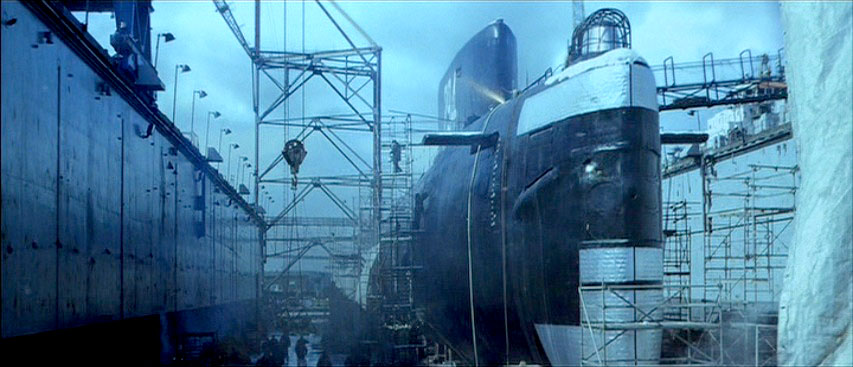Michael Novotny

AS: For features that changes…
MN: It changes in a big way. For instance on K-19 I had a team in Montreal with an art director, I had an art director in St. Petersberg Florida, I had an art director in Los Angeles. Art directors are a dime a dozen in those shows. So now you’ve got a big flock and every one of those guys has their own team. So in a sense you’re giving them autonomy. You’re flying around as an ambassador for the script with the director so when you show up you’re trying to pull in the herd to somehow focus on the real story or what we’re going to do. And again the technical aspects of all those positions, you’re assuming that they’re doing those perfectly. And you’ll know immediately if they’re not. I’ll get a phone call as fast as lightening.
AS: What would you say the attributes are that a production designer should have in contrast to, say, an art director or set designer?
MN: I think that there’s a lot of flexibility in that. I agree with what John Muto said in that being a writer is a good background for being a production designer. You know I’ve been told that we’re in charge of everything that’s behind the actors that’s out of focus. Which to a large extent is true. But there are moments when we break out of that and we establish clearly a visual character in the script that’s distinct. I had a great moment watching K-19 when I first saw that submarine out at sea -because I saw that’s a character that I made. And it really was a character. It was about that boat.
AS: Some people talk about production design being visible or invisible…
MN: When you’ve created something where nobody notices it, the belief in that environment is what carries the story. There are shows where that’s not the case. You know, a Harry Potter show is delicious with its detail and its environments. On a TV level Pushing Daisies had elements that were delightful in and of themselves. You could pull the actor out and it would have still been a great moment. You know, the Pie Hole Restaurant. Kudos to Michael Wylie for coming up with that.
AS: Say someone’s just starting out and wanted to avoid any pitfalls…
MN: I hate to say it but it’s true you should probably shut up and listen to the director. I think a new designer might tend to get out and think he’s the greatest thing since sliced bread. The danger there is that very quickly somebody’s going to realize that he’s not the greatest thing since sliced bread. His talking is going to overshadow the conversation at hand. So the bottom line is that sometimes it’s better to simply listen.
Often I’m very tempted to say, you know, That should be a beige room, that should be a red room. And then I’ll stop myself and say, Sleep on it. Think about it. Don’t give everything at once. Eke things out bit by bit as the ideas come through to you. Form them and really get behind them personally. Then come forward with them when you really feel they’re solid ideas that have made it through at least a day. Unless of course you’re a virtuoso. There are a few of those around.
Pingback: Daniel Novotny
I worked with Michael on Jaws 3D as a specialty carpenter, and I remember him as a wonderful and creative man. It was a pleasure and we all talked about how cool it would have been to all be working on something important!
Hi Zev- you’ll be happy to hear that during the interview I could tell Michael was still a genuinely awesome and creative guy! And as you may have read, his son Dan is also an accomplished designer…